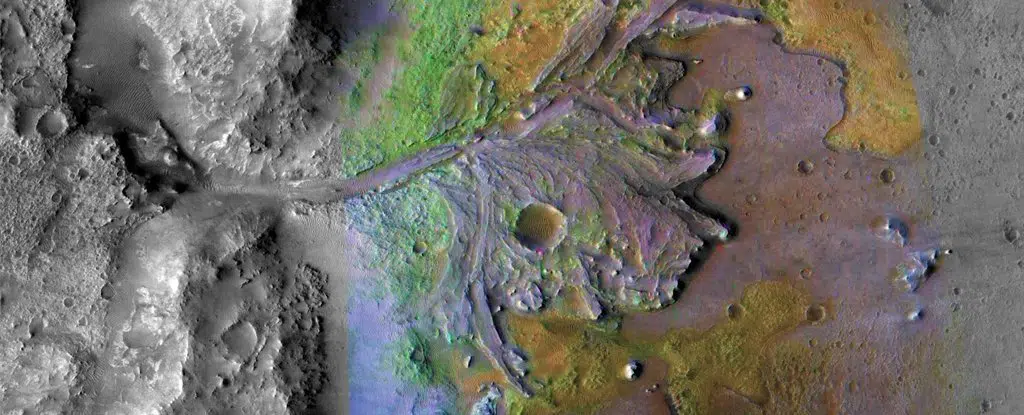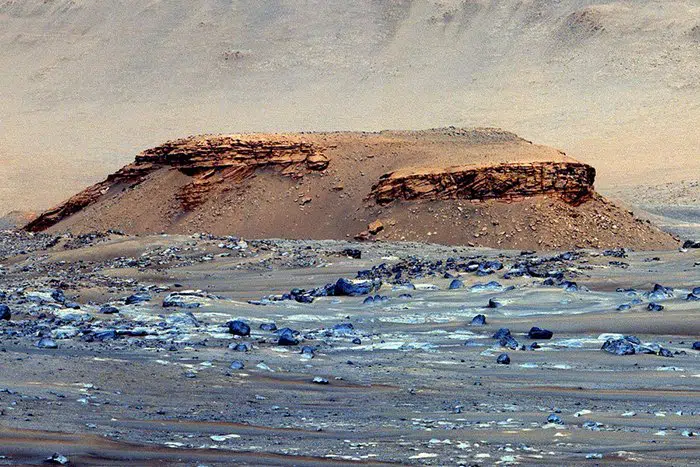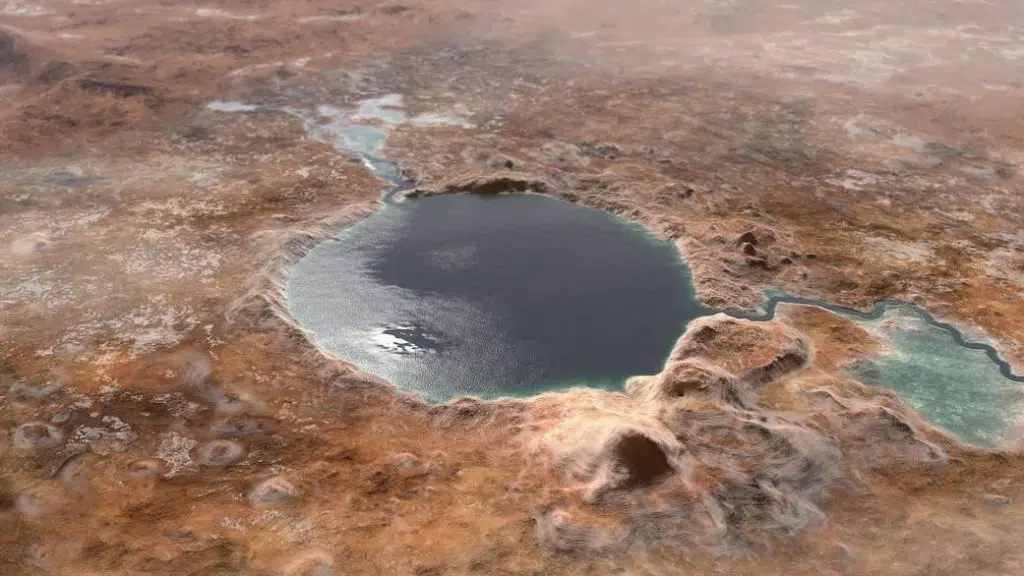
A study of images from Mars shows that ancient water that once existed on the surface of Mars did indeed shape the landscape of the planet, according to an announcement made on Thursday.
Photographs of the Jezero crater show that the geography of the Red Planet was affected by the movement of water billions of years ago; the new evidence collected by the rover will help in the ongoing search for any evidence of life on the planet, according to the study, which was published yesterday in the journal Science.
The Perseverance rover landed in Mars’ Jezero crater back in February, beaming images of its descent all the way down to the surface of the planet and giving renewed hope to researchers who have tasked themselves with finding traces of life on the planet. The new research is a result of the study of the images it took during its first three months on the planet.
Now, because of photographs taken recently by the Rover, scientists can see just how a now-vanished river once entered into a lake, laying down sediment in the typical delta pattern that is visible from just above the planet.
Cliffs that once formed the high banks along the delta are shown in the high-resolution images; even their layers from sedimentation are visible in the new photos.
NASA astrobiologist Amy Williams, who heads up a team in Florida studying the images, believes there are many similarities between the cliffs’ layers and those found on Earth in areas where deltas have formed.
She says that the morphology of the three layers on the bottom of the cliffs shows not only that water was present early on but that it was also flowing much like our rivers do, carving their way into the Martian surface.
“From orbital images, we knew it had to be water that formed the delta,” Williams said in a press release.
“But having these images is like reading a book instead of just looking at the cover.”
This shows that the climate on Mars at that time was “warm and humid enough to support a hydrologic cycle” approximately 3.7 billion years ago, according to the study.

The topmost layers of the cliffs show the large boulders, measuring over one meter in diameter, are scattered throughout, evidence of major flooding, just as we see on Earth today in violent floods.
The fine sediments that form the base layer of the cliffs may be where evidence of life can be found, according to the scientists.
These areas will be the focus of their quest to find signs of life, or “biosignatures,” that may still be there from long-gone Martian organisms.

The mission to find traces of life on Mars is the thrust of Perseverance’s journey — which cost taxpayers billions of dollars — to the Red Planet.
Although the probe can perform some basic experiments on its own, as many as 30 samples of rocks and soil will be taken and placed in sealed containers by the rover so that they can be tested on Earth in the 2030s when it returns home.
In September, NASA announced that the probe had collected two different rock samples in the Jezero crater that did indeed show that they had been in contact with groundwater for a long period of time.
The Holy Grail of this type of research, of course, would be to find that there was a type of microbial life in the samples, which may show up in the context of the salts that are part of many Martian rocks.
According to Williams, the discovery of life on Mars would constitute one of the most “profound” discoveries ever made by humans.
“It’s really eye-opening to see something no one on Earth has ever seen before,” she said of the discovery of the delta and its cliff formations.
The Perseverance Rover, the fifth such vehicle to land on Mars, after Sojourner, Spirit and Opportunity, and Curiosity, has no less than 19 cameras, a two meter (seven foot)-long robotic arm to take samples with, and even, two microphones.
The state of the art technology onboard the rover also enables it to conduct simple experiments on its own.
The SuperCam is one such technological marvel, allowing the rover to hit rocks with a laser beam from a distance, enabling it to study their vapor, which shows their chemical composition.
Earlier this year, Earthlings were spellbound as Perseverance’s tiny helicopter sidekick, called Ingenuity, rose about the rover, taking video all the way during its trip.
NASA plans for Perseverance to take a trip to cross the delta, and then go across the shore of the dry lake of the crater and explore its edges.
See all the latest news from Greece and the world at Greekreporter.com. Contact our newsroom to report an update or send your story, photos and videos. Follow GR on Google News and subscribe here to our daily email!



